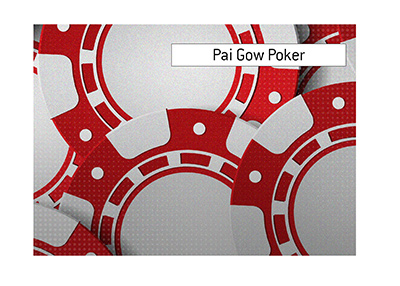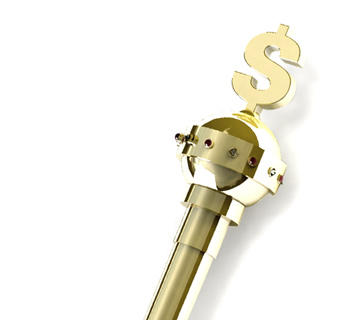A Look at the Increasingly Popular Game
Q: What is Pai Gow Poker?
A: What is "Pai Gow Poker"?
The game, which was invented by Sam Torosian in 1985, has grown in popularity over the years.
Pai Gow Poker is played with a standard deck of 52 cards, as well as one joker.
 There are six players at a Pai Gow Poker table, as well as one dealer (the dealer is a casino dealer at brick-and-mortar casinos or one of the players in a home game).
There are six players at a Pai Gow Poker table, as well as one dealer (the dealer is a casino dealer at brick-and-mortar casinos or one of the players in a home game). The point of Pai Gow Poker is to beat the dealer, which is acting as the "banker".
All players at the table are dealt seven cards face down. The point is to make a two-card hand as well as a five-card that can beat both of the banker's hands.
The two-card hand is often referred to as "in front" or "on top" (based on how players will typically organize the hands in front of them), while the five-card hand is usually called the "behind" or the "bottom" or the "high".
There are 7 betting positions at the table, starting with the dealer (#1) and moving counter-clockwise. A number between 1-7 is randomly chosen, and that is where the deal will begin and proceed counter-clockwise. For instance, if the #5 is chosen, the deal will start with the #5 player and move counter-clockwise from there.
Hands are ranked in the same way as Hold'em, though there is one key difference - a "wheel" (A-2-3-4-5) is the second highest straight, behind Broadway (this can vary from casino to casino, though the wheel is the second highest straight in most casinos in the United States).
The joker can be used as any card to complete a flush or a straight. If not used for one of those two types of hands, the joker will always be an ace.
If a player's two-card hand beats the banker but his five-card hand loses, or vice versa, the hand will be declared a "push". If the player wins both of his hands, he will win against the banker.
Players can commit "fouls", which occurs when their two-card hand beats their five-card hand. This is not allowed in Pai Gow Poker. This can result in the forfeiture of a player's hand.
if either hand is tied, the hand will go to the dealer, which further increases their advantage. For instance, if one of the hands ties and the dealer wins the other hand, the dealer will take down the pot. "Tie goes to the dealer" is where the advantage for the dealer is generated.
-
In most cases, players will be charged a flat fee to play in a hand. For instance, players may be charged $10 for every hand that they play. If they win both of their hands, they will receive double their money back, minus the rake. Again, if they tie the banker, the player will lose their hand, which gives the banker/dealer a small advantage.
Players can also have the option to make a bonus wager that pays off if the player hits a "big hand".
For instance, if you place a $10 bonus wager and hit a 7-card straight flush, you can receive a payout of 8000-1. These bonus payouts range from 2-1 (straight) all the way up to a 7-card straight flush (8,000-1).
Here is a table of the bonus payouts that are typically used:
7-Card Straight Flush, 8,000-1
Royal Flush Plus Predetermined Pair, 2,000-1
7-Card Straight Flush with Joker, 1,000-1
Five Aces (with Joker), 400-1
Royal Flush, 150-1
Straight Flush, 50-1
Four of a Kind, 25-1
Full House, 5-1
Flush, 4-1
Three of a Kind, 3-1
Straight, 2-1
Back to Answers

